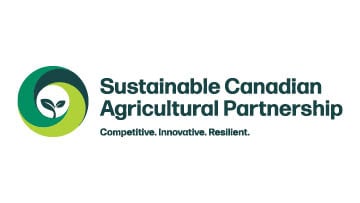Adding lactose, in the form of whey permeates, to dairy rations: impacts on milk properties and rumen function
Ongoing

Project Overview
The dairy sector must identify ways to optimize milk composition to meet the growing demand for higher commercial value products like cheese and butter. Concurrently, there is a need to add value to by-products generated during milk processing. One such by-product, whey permeate, is composed primarily of lactose, and can be added in lieu of starch in dairy rations. Previous research indicates that feeding lactose to dairy cows can boost dry matter intake, milk production, and fat yields. However, there is a need to better understand the impact of feeding whey permeates on the rumen microbiome and functionality, and the subsequent influence on milk composition and technological characteristics.
The overall objective of this project is to assess the impact of using lactose, in the form of whey permeates as a partial replacement for starch in dairy rations, on milk properties and rumen function. This research aims at improving sustainability and cost-effectiveness of dairy production while making use of an important sector by-product, through the circular economy.
What Will the Research Team Do?
The research team will conduct; (i) two trials to measure the effects of partial replacement of dietary starch with increasing levels of dry whey permeates in typical dairy diets used in eastern Canada (trial 1) and western Canada (trial 2) on rumen metabolism and milk productivity; (ii) laboratory analyses to measure the impact of lactose feeding on milk properties relevant to butter and cheese-making; (iii) an analysis of the environmental impacts and economic opportunities associated with feeding whey permeates; and (iv) an investigation into the application of mid-infrared spectroscopy for predicting the processing potential of milk in commercial conditions.
The objectives of this project are to:
- Determine the effects of partial replacement of dietary starch with dry whey ultrafiltration (UF) permeate in typical eastern and western Canadian dairy diets on milk production, composition, and technological properties.
- Explore how whey UF permeates impact the microbial ecology of the rumen, and how this can influence rumen microbial functionality.
- Identify the most efficient routes to valorize UF permeates dairy farms.
- Investigate the potential application of mid-infrared spectroscopy to predict fine milk composition and technological traits in a Canadian context.
Principal Investigators
Rachel Gervais
Université Laval
Renée Pétri
Agriculture and Agri-Food Canada - Sherbrooke
Co-Investigators
Julien Chamberland
Université Laval
Kees (JC) Plaizier
University of Manitoba
Guillaume Brisson
Université Laval
Éric Paquet
Université Laval
Yves Pouliot
Université Laval
Claude Robert
Université Laval
Yvan Chouinard
Université Laval
Débora Santschi
Lactanet
Filippo Miglior
Lactanet
Key Words
- Whey, milk composition, microbiome
Period: 2023-2028
Budget: $620,000
Last Updated: June 17, 2024
Note: As per the research agreement, aside from providing financial support, the funders have no decision-making role in the conduct of the studies, data collection, and analysis or interpretation of the data. Researchers are independent in conducting their studies, own their data, and report the outcomes regardless of the results. The decision to publish the results rests entirely with the researchers.


